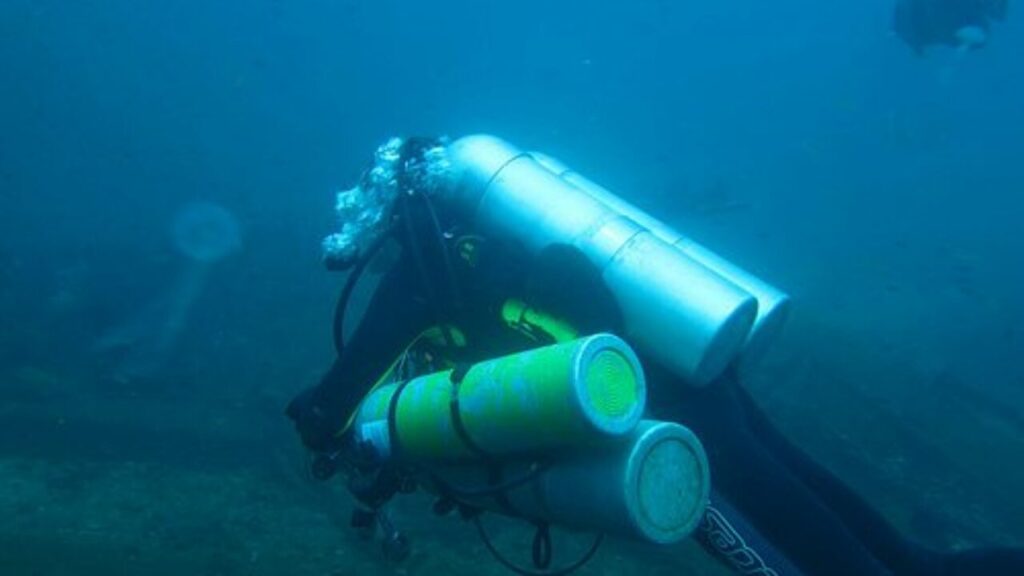
Helium is a colorless, odorless, tasteless and non-toxic noble gas. It is the second most abundant element in the universe after hydrogen and accounts for about 23% of all atoms. Heliox is a mixture of helium and oxygen that is used to reduce the ambient pressure on divers. So, why is helium used in scuba diving?
Helium density
Helium has a low density of 0.1786 gram per liter at STP. It is less dense than nitrogen, which has a density of 1.25 grams per liter at STP, making it easier for your body to float on helium compared to nitrogen-filled air.
The density of hydrogen is only slightly higher than helium’s; this means that if you were diving in pure hydrogen instead of mixed gas mixtures with helium, then your buoyancy would be even more pronounced because there would be even less mass inside your body pushing against gravity!
Rapidly chilled
The helium is chilled to reduce the oxygen content, which in turn reduces the risk of decompression sickness. This mixture of helium and oxygen is called heliox.
Helium is also used in diving because it’s lighter than air and doesn’t cause as much drag on your body as nitrogen does (which is what makes up most regular air).
The speed of sound in helium
The speed of sound in helium is much higher than that of nitrogen at normal temperatures and pressures. This is because the density of helium is much lower than that of nitrogen, which means that sound travels faster in helium than it does in nitrogen.
This means that when your instructor blows a whistle underwater, you’ll hear him sooner if he uses a high-pitched whistle than if he uses a low one (assuming everything else remains equal).
This requirement for helium limits its practical use to those depths where the partial pressure of oxygen (ppO2) is above 1.6 bar.
It has a low density and therefore exerts less buoyancy than air when inhaled by divers who have ascended from depth, thereby reducing their risk of decompression sickness (DCS). Helium has a high thermal conductivity; this helps divers to maintain thermal balance in cold water dives where they may be exposed to temperatures as low as 4C or below[1].
It Helps divers to maintain thermal balance in cold water dives
Helium is a good insulator, which means it keeps heat in and out of the diver’s body. It also has a low mass, which means less energy is required to move helium molecules around the diver’s body than if they were made of heavier gases like nitrogen or oxygen. Finally, helium has very high thermal conductivity–it conducts heat much better than air does.
Helium helps divers maintain thermal balance in cold water dives because these properties allow helium to retain body heat while preventing excessive loss through convection and conduction (i.e., keeping your skin warm).
Conclusion
Helium is a noble gas, which means that it does not react with other elements and it does not have any chemical properties. In addition, helium has a low density of 0.1786 gram per liter at STP. This makes it a good choice for scuba diving because it reduces the ambient pressure on divers while they are underwater.
